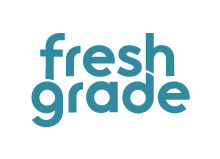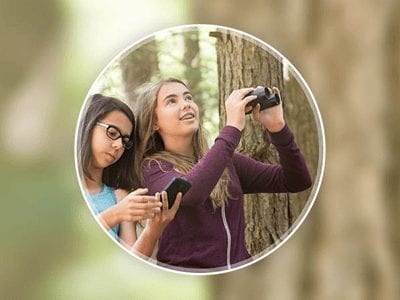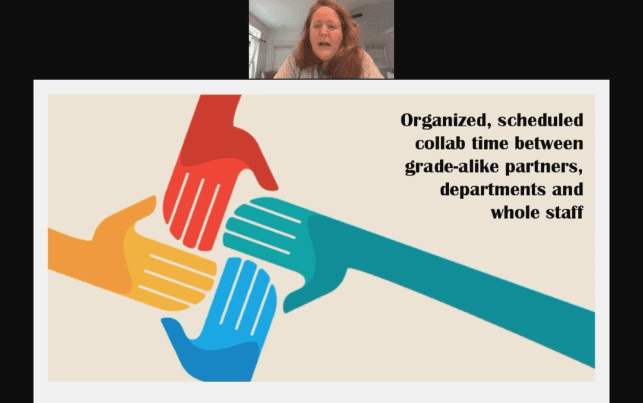Strategies for Becoming an Effective, Present Teacher
Homework, assessments, projects. Grades, lesson plans, conferences. Teachers can get caught up in the day-to-day parts of the classroom and forget to take time to consider whether or not they’re teaching effectively. In her edWebinar, “Make Learning Visible in Your Classroom,” Cari Wilson, Innovation and Technology Lead Teacher at West Vancouver School District, BC, explained how she continually evaluates her instruction to improve her impact on students’ learning.
Wilson based her strategies on Professor John Hattie’s theories on Visible Learning and Teaching. Hattie’s research focuses on enhancing effectiveness by having teachers evaluate their own practice as well as helping “teachers see learning through the eyes of students and help[ing] them become their own teachers.” From this, Wilson identified five key actions she’s adopted that she thinks can have an immediate impact.
A safe place: This means that the teacher works on building a relationship with the students and developing a classroom environment where the they trust each other and feel comfortable taking risks. For the room itself, Wilson advocates creating displays that focus on student work over what the teacher wants to share. Give the students visual evidence that their work is valued. Regarding teacher-student relationships, Wilson works to have at least one meaningful interaction with each student every day. For example, when students leave at the end of the day, she says goodbye to each one, asking them a question and acknowledging their presence for that day.
Evaluate impact: Wilson shared stories of teachers who set up their academic calendar a year in advance and who teach the same unit on the same day every year, whether or not the students have mastered the previous lessons. Instead, she says teachers need to take a step back and ask what mastery actually looks like for each unit. Then, they need to adjust lessons accordingly based on student progress. One class may be right on schedule, for instance, but another might need more time on the first task.
Collaborate: While teachers do work together on one-off projects, Wilson believes collaboration should be built into their professional schedules. It doesn’t necessarily have to be about their students working across subjects on projects, although that can happen. Some of the best collaboration can be teachers working together on their professional development to explore and improve their teaching strategies. Administrative support is essential, such as building time into school hours for teachers to meet.
Success and clear outcomes: Most students perform better when they understand the end goal. More important, though, says Wilson, is understanding the steps needed to get to a successful outcome. When Wilson assigns a project, for example, she outlines the steps with due dates for each and adds in time for students to get individual consultations. This helps students understand the process and take ownership of their grade because they’ve been given all the tools they need for success. They can also take these lessons and apply them to other projects in and out of school.
Assessment and feedback: At first, Wilson used to just hand back assignments en masse, but she noticed her students weren’t looking at their grades or her comments. Now, she gives back work when she has the opportunity to verbally share the feedback with her students and talk about their work. In addition, students write reflections on designated projects. Through this strategy and the constant connection with students, Wilson feels that students have become stronger at self-assessment.
Finally, Wilson wanted participants to understand that all of these activities are intertwined and work together to build more effective teaching and learning. “I find that in my classroom…everything that I do connects to everything else that I do,” said Wilson. “One activity that I do will connect very intimately with another one.”
This broadcast was sponsored by FreshGrade.
This article was modified and published by eSchool News.
About the Presenter
Cari Wilson is the elementary innovation and technology lead teacher for West Vancouver School District in British Columbia. With over 20 years of classroom experience and a Masters in Educational Technology, Cari works with both teachers and students in West Vancouver and beyond, helping them implement technology and innovation in engaging and thoughtful ways.
About the Host
Siobhan Nordstrom is the community manager for FreshGrade and is certified in Adult Continuing Education. Over the last three years, she has led dozens of professional development sessions all of which have impacted the way that educators communicate learning through eportfolios. Siobhan has extensive knowledge about the product and the various ways it is being used across the U.S. and Canada.
Join the Community
TechTools is a free professional learning community where educators can discover new resources, free technology, and great ideas for integrating technology into the classroom to engage and inspire students.






Comments are closed.